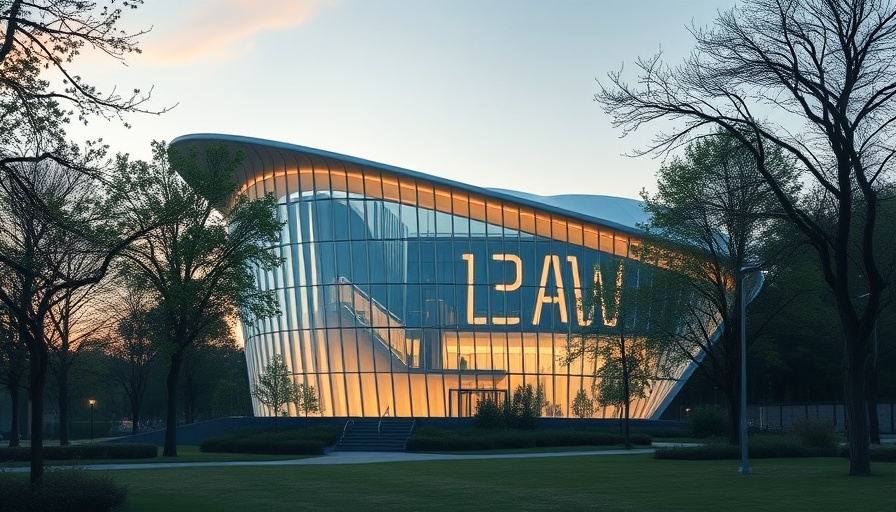
Transforming Park Spaces with Innovative Design
The recent completion of the Beaverdam Reservoir Park sets a new standard for eco-friendly public recreational spaces. Spanning over 60 acres, this park isn’t just about leisure; it's a vibrant hub designed to promote sustainability and community engagement. Featuring a variety of facilities, including a welcome center, rental boathouse, and educational exhibits, this park combines functionality with a profound respect for the environment.
A Closer Look at the Polycarbonate Facade
At the heart of the park’s architectural innovation lies a striking polycarbonate facade that not only enhances its aesthetic appeal but also serves practical purposes. This translucent material allows natural light to flood the interiors during the day, creating a warm and inviting atmosphere and transforming the building into a beacon during the evening hours. As the sun sets, the building glows softly, providing visibility and warmth, a perfect example of how architectural choices can impact community use.
Benefits of Sustainable Building Practices
Utilizing materials such as polycarbonate is pivotal in reducing the carbon footprint of new constructions. These materials are lightweight, energy-efficient, and durable, aligning with modern standards for sustainable building. By focusing on energy efficiency, the Beaverdam Reservoir Park not only reduces operational costs but also sets an environmental benchmark for future projects. Such sustainable building practices reflect a growing trend among property developers and construction firms to integrate eco-conscious decisions into their designs.
Community and Economic Impacts
The park's facilities also provide significant benefits for local businesses. With dedicated paths for both cyclists and pedestrians, the park encourages community interaction and healthy lifestyles. The rental boathouse supports local sports teams, boosting opportunities for community events and contributing to a sense of belonging among residents. Additionally, the influx of visitors can energize local shops and services, showcasing how thoughtful design serves dual purposes of recreation and economic vitality.
Looking Ahead
The Beaverdam Reservoir Park is just the beginning; it serves as a model for future developments that prioritize both community needs and environmental responsibility. As more projects incorporate advanced materials and design strategies, we can expect a shift toward greener construction practices in the industry. Such changes are vital in addressing the challenges posed by climate change and urbanization.
In conclusion, the integration of innovative designs and eco-friendly materials, such as the park's polycarbonate facade, reflects a necessary evolution in how we think about recreation spaces. It's a pivotal moment for businesses and developers to embrace sustainable building practices, ensuring that new constructions foster community engagement while respecting the environment.
 Add Row
Add Row  Add
Add 




Write A Comment